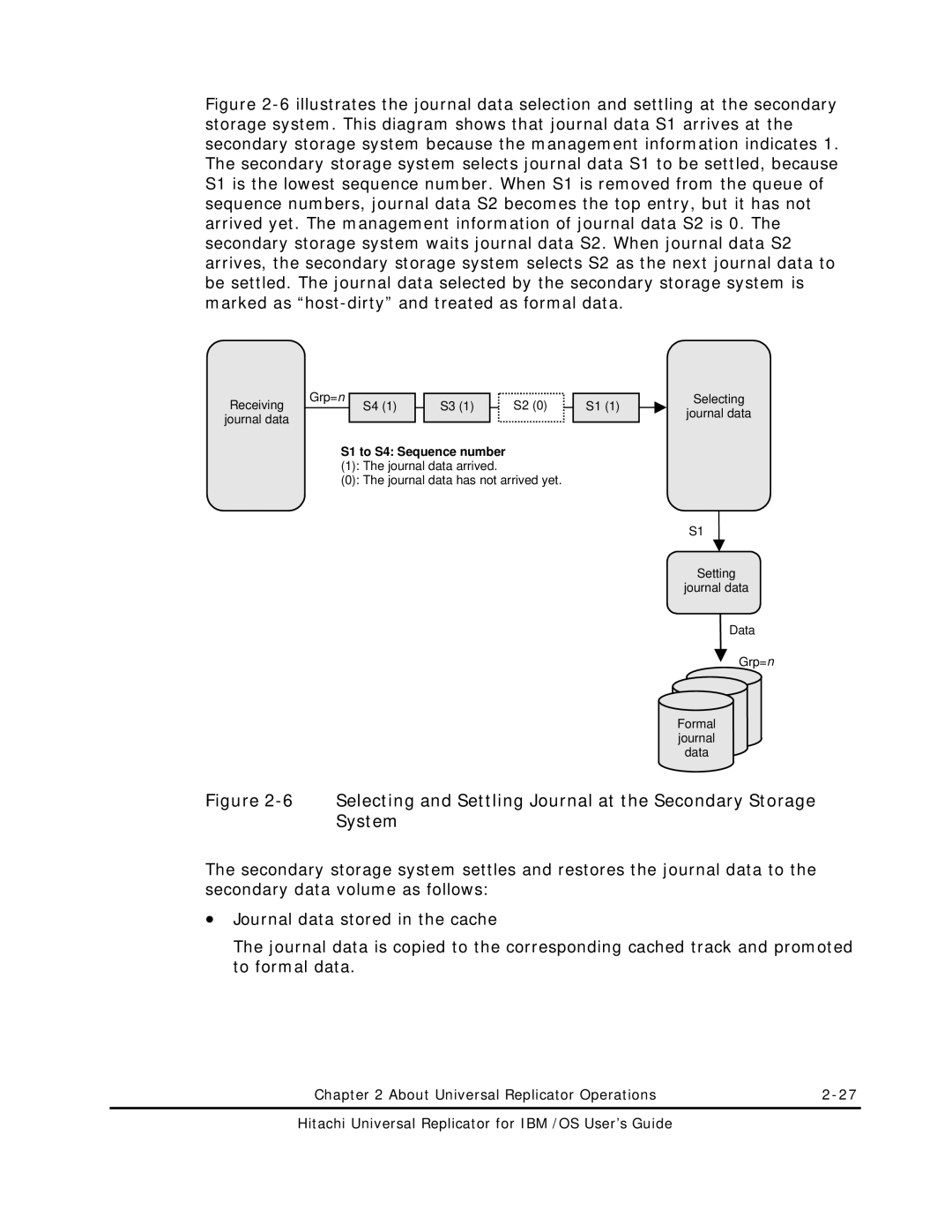
Figure 2-6 illustrates the journal data selection and settling at the secondary storage system. This diagram shows that journal data S1 arrives at the secondary storage system because the management information indicates 1. The secondary storage system selects journal data S1 to be settled, because S1 is the lowest sequence number. When S1 is removed from the queue of sequence numbers, journal data S2 becomes the top entry, but it has not arrived yet. The management information of journal data S2 is 0. The secondary storage system waits journal data S2. When journal data S2 arrives, the secondary storage system selects S2 as the next journal data to be settled. The journal data selected by the secondary storage system is marked as “host-dirty” and treated as formal data.
Receiving
journal data
Grp=n | S4 (1) | S3 (1) | S2 (0) |
|
S1 to S4: Sequence number
(1): The journal data arrived.
(0): The journal data has not arrived yet.
S1 (1)
Selecting
journal data
S1
Setting
journal data
Data
Grp=n
Formal journal data
Figure 2-6 Selecting and Settling Journal at the Secondary Storage System
The secondary storage system settles and restores the journal data to the secondary data volume as follows:
•Journal data stored in the cache
The journal data is copied to the corresponding cached track and promoted to formal data.
Chapter 2 About Universal Replicator Operations |
